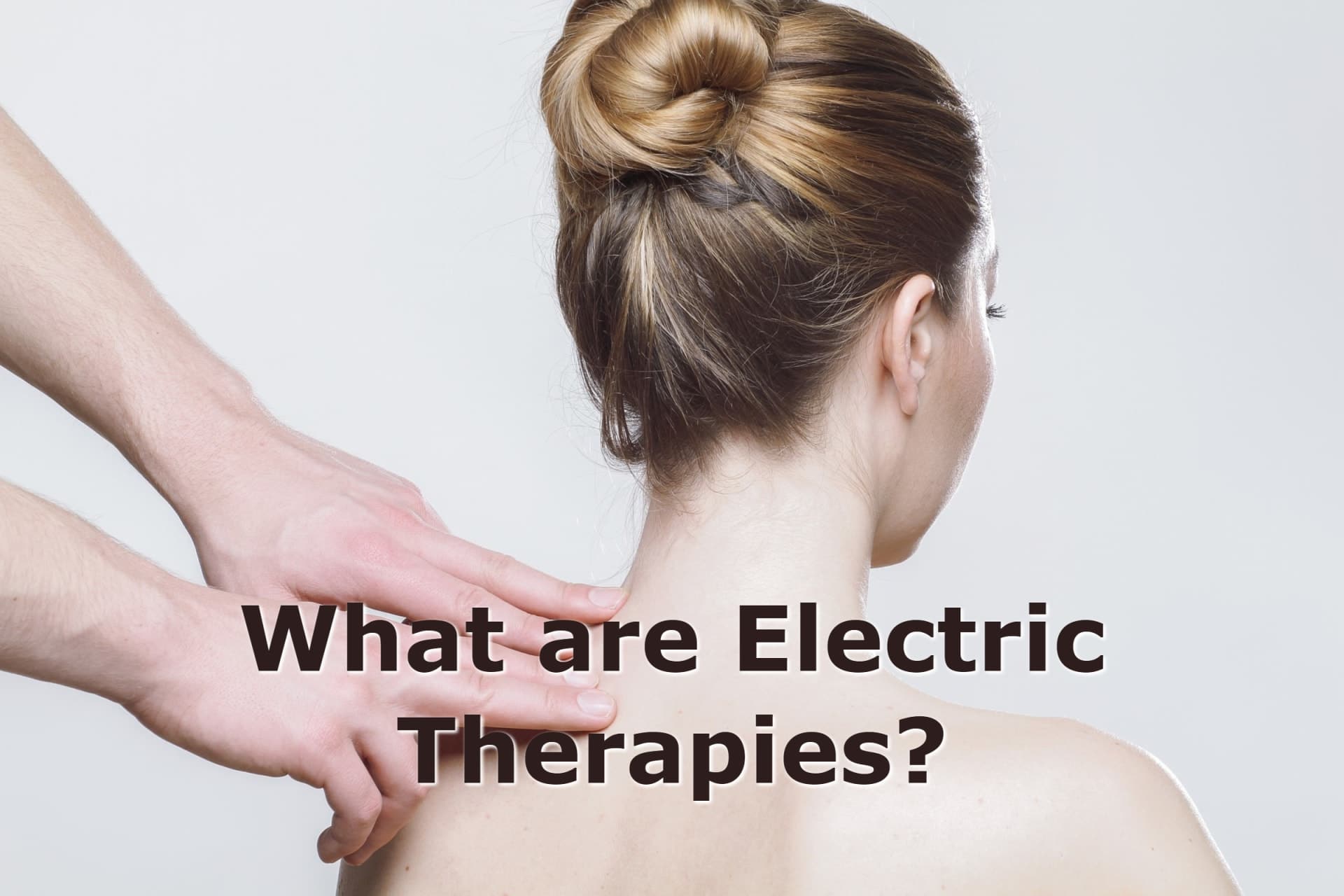Chiropractors treat millions of people every year. Most of those people seek out chiropractic care because they are in pain or discomfort and are looking for a solution. While chiropractors have many tools available to effectively treat pain, many people still primarily associate spinal adjustments with chiropractic treatments. There is, however, another class of treatment that you might not be aware of. These treatments are electric therapies.
What are Electric Therapies?
Electric therapies primarily treat pain. Especially if a person has not responded well to other treatments, electric therapies can work by directing mild electric impulses to the target areas. The end goal is to improve overall functioning by decreasing pain, strengthening muscles, repairing tissues, and improving circulation.
Generally, electric therapies work by electrodes that attach to the skin and also connect by wire to a machine. The machine then sends mild electrical impulses to the skin through the wires. Electric therapies often work in conjunction with other treatments. Many professionals consider them a much less risky treatment than medications or surgery with less side effects as well.
Electric therapies work by promoting the body’s own release of endorphins and by blocking pain signals along nerve pathways. These therapies also treat pain from diabetic neuropathy, and fibromyalgia. They also help to heal wounds, treat migraine headaches, and stimulated bone growth.
What are the Different Types of Electric Therapies?
While there are several types of these therapies, they share the commonality of using electrodes to transmit mild electrical impulses to the body. Their differences lie in the effects of treatment, waveforms, and frequencies. Below is a list of electric therapies. Some experts also include ultrasound and laser therapy in this group, even though these treatments do not actually transmit an electric current.
- Galvanic Stimulation (GS)
- Pulsed Electromagnetic Field Therapy (PEMF)
- Interferential Current (IFC)
- Electrical Muscle Stimulation (EMS)
- Percutaneous Electrical Nerve Stimulation (PENS)
- Transcutaneous Electrical Nerve Stimulation (TENS)
Transcutaneous Electrical Nerve Stimulation (TENS)
Of all the electric therapies, TENS is one of the most widely used. It works by placing sticky electrodes onto the skin. These attach by wire to a machine, sending mild electrical impulses to the targeted area. This creates a tingling feeling and reduces pain. Most of the time, the electrodes attach on or near the area of pain. However, some people respond better to the electrodes being placed in other areas. This is something the chiropractor would determine on an individual basis.
TENS treatments vary in length and frequency and they can deliver stimulation in variable complex patterns. If TENS therapy works well for you, there are even some small devices that can strap right to the body, and are not visible under clothing.
Percutaneous Electrical Nerve Stimulation (PENS)
PENS is similar to TENS in that electrodes attach to the body from a machine, however PENS uses tiny needles to deliver the electrical stimulation. This occurs so that the impulses deliver closer to the nerves, making them less sensitive to pain. Typical treatments last about half an hour. Some people respond to treatment immediately, while others might require several treatments to get the desired results. PENS is particularly good at reducing muscle spasms, allowing for a greater range of motion.
Electrical Muscle Stimulation (EMS)
EMS appears similar to a TENS unit, in that it uses electrodes attached to a battery operated machine to deliver an electric current, but the current targets muscles instead of nerves. This method prompts the muscles to contract and will regain strength gradually. This is one of the best electric therapies for severe muscle injuries, but can also work for less serious conditions, such as a pulled muscle. It may also be used to help treat muscle atrophy after surgery.
Pulsed Electromagnetic Field Therapy (PEMF)
This type of electric therapy is used to ease pain and improve cellular functioning. Professionals sometimes use it after spinal surgery to promote bone growth and fusion. This sometimes results in avoiding follow-up surgery. PEMF also works successfully to treat back and leg pain often experienced after back surgery and also serves to reduce pain associated with osteoarthritis of the knee.
Interferential Current (IFC)
Interferential current is similar to TENS but provides a deeper level of penetration for the electric current. It uses a higher frequency, and the user experiences a lower level of discomfort compared to the higher level of frequency. It is often used to treat muscle spasms and edema, improve range of motion, and treat circulatory disorders. Experts sometimes recommend it after surgery to encourage more rapid healing.
Galvanic Stimulation (GS)
Unlike some of the other electric therapies, such as TENS and IFC, galvanic stimulation provides a direct electrical current, where the others provide an alternating current. It is frequently used to treat major tissue trauma, accompanied by bleeding and swelling, and can also treat balance issues in the ear. Blood flow changes by the direct current creating an electrical field over the treated area. The positive pad minimizes swelling by reducing circulation to the area and the design of the negative pad fosters speedier healing by increasing circulation.
Talk to a Chiropractor about Electric Therapies Today
This is just a brief overview of electric therapies and the ways in which your chiropractor may be able to use them to decrease your pain, increase your mobility, and otherwise increase overall function for your body. If you, or someone you know, is suffering, why not see what one or more of these electric therapies might do for you?
To learn more about electric therapies and how a chiropractor might use them to help reduce your pain and increase overall functioning, please contact A Family Chiropractic Clinic at (940) 566-0000. Our experienced staff can provide a full evaluation as well as the information necessary to make the best treatment decision for your needs.

